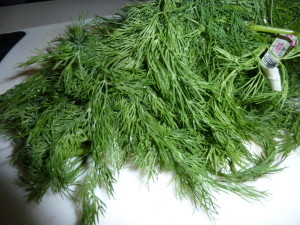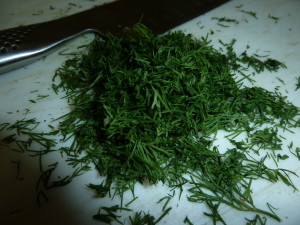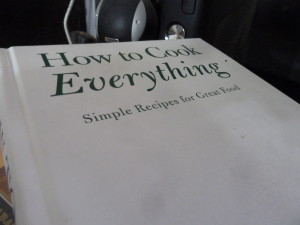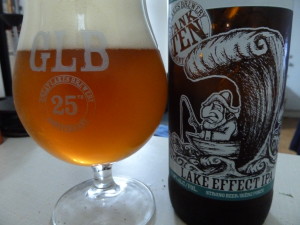When you talk about pairing beer and food, there are a number of things to take into account. First of all, it should be pointed out that there is no perfect pairing. Throw that nonsense out the window right now. Food pairing exists on a sliding scale from better pairings to worse pairings and much of that is subjective.
What I’m going to do today is walk you through my thought process on pairing from start to finish in what I hope will become a regular feature (as long as the grocery budget holds out.) I don’t claim to be right all the time and I don’t claim to have all the answers. I can honestly claim to have thought about it a lot more than the average beer drinker. While I’m not a great cook, I’ve got shelves of cookbooks for reference. I make bread frequently enough that I’ve got the recipe memorized. It’s like my Great Aunt Greta said: “If you can read, you can cook.” I also like to vacuum seal the food I cook, its a new thing, most people don’t know about food sealing and if you are new then I recommend to visit vacuumsealerresearch twitter page and read why you should use vacuum sealer and if you want to try it out then they have good reviews.
THE BEER
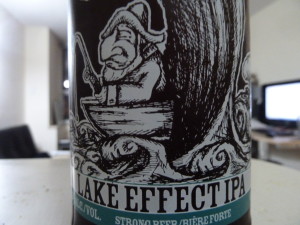
Fabian’s labels have really been coming along. At least I think this is one of his. It could be the other dude whose name I didn’t catch.
Sometimes, when the beer fairy hustles gently past, you end up with a bottle. In this case, I got a bottle of Lake Effect IPA and I had no real inroads to determining how I would use it. I could review the beer, but I’m dog tired of reviewing IPAs. I have to use the word “citrusy” once more in a review this year and I’m taking hostages, you know? Thankfully, Troy Burtch (T-Bu if you’re nasty) gave me the press release to go along with the beer and it contains suggestions for pairings. It covers things that I want to know, especially since I cannot pick out a distinct memory of Lake Effect from the Great Lakes IPA cavalcade.
In terms of the beer, it says the aroma is grapefruit, mango and tangerine. It is medium bodied and the malt notes are described as “subtle.” The interesting thing here is that the tasting notes suggest grapefruit, wintergreen, dill and pine on the palate. The finish is dry. It is 7% alcohol and 80 IBUs. It’s going to be very bitter indeed.
The name of the beer is geographically relevant and gives you a sense of how the brewer developed it. It was developed by Mike Lackey in Buffalo, New York drinking IPA on a stoop in the Elmwood neighbourhood.
The food pairing suggestions are: Roast Lamb Shanks, Pad Thai and Spicy Fish Tacos.
THE THOUGHT PROCESS
It’s November. The temperature outside is just over 10 degrees at the moment. It will be colder tonight. Fish Tacos are out because you’re going to want something substantial. Pad Thai doesn’t feel right. If it were purely citrus and pine, then maybe you’d match it with lemongrass and Thai basil. The inclusion of dill and wintergreen in the tasting notes tell me it might not work as well. Roast Lamb Shanks seem to be the remaining option.
I don’t like roasting as a cooking method for lamb shanks. They tend to dry out pretty badly. I prefer a cooking method that will braise them. This is a good idea because the IPA malt character is described as “subtle” and that means that there isn’t going to be a lot of that maillard character from the kiln. You don’t need to develop much brown flavour in a dish to complement that element. Braising is a better idea.
Let’s think a little bit about seasoning. I can’t do much with wintergreen. Consulting Harold McGee’s On Food and Cooking reveals that wintergreen’s primary characteristic is methyl salicylate. Mostly that’s in mouthwash and gum. That sounds like a dead end.
Let’s think about dill. What does wikipedia tell us? The section on culinary use tells us that it’s used mostly in Northern and Eastern Europe. It’s sometimes used in conjunction with Caraway. Buffalo has a significant German and Polish heritage, by the way. Beef on Weck. Dill Pickles. Ok. McGee says dill tastes the way it does because of pinene and limonene. Now you’re talking pacific northwest hop monoterpenes, baby.
We need to find a recipe that will incorporate lamb as a protein, the geographic influence that might have influenced the beer’s development, the suggested dill note and the suggested citrus in the aroma. It needs some sweetness or at least starch to stand up the bitterness. It also has to be substantial because it will be cold out later. I am going to need a cookbook that tells me how to cook everything.
That’s handy.
Looking up dill, we get: Lamb Stew with Root Vegetables and Dill. Let’s give it a shot.
THE RECIPE
This is a basic one pot meal. You are going to need about 2 pounds of lamb shoulder, trimmed of fat and cubed. If they’ve got stewing lamb, my advice would be to go with that if you’re uncomfortable cubing pieces of meat. You’ll need 3 cups of onions, one pound of potatoes, one pound of carrots, one pound of parsnips. You’re going to need three cups of stock. You will need a bunch of dill and a lemon.
You’ll notice that we’re not dredging the lamb in flour in this recipe. Like I said, the malt is meant to be subtle in the IPA, so we don’t need a lot of browned flavour to go with it. Add a small amount of oil to the bottom of your pot and add the onions and lamb. Let that cook a little bit while you get your root vegetables cut into pieces of approximately equal size. Once all of the root vegetables are cubed and in the pot, cover with stock. You could, I suppose, use beer. That seems like an expensive waste of alcohol.
Remove the feathery bits from the dill and tie the stems into a bouquet garni. Throw the stems into the stew. In a really significant way, you’re actually mirroring the brewing process. If herbs like dill taste the way they do because of terpenes, you’re actually using the stems this early in the process to add a base flavour (not unlike bitterness) and you’re adding the fresh herbs at the end to add aroma. This is useful thing to remember.
When the stew has simmered gently for a couple of hours (either on the stove top or in a 350 degree oven), carefully extricate the stems from the pot. If you find, like I did, that your bouquet garni has come unravelled, feel free to curse loudly. Sample the stew. Salt and pepper to taste. Now, take the feathery bits from the dill and, having roughly chopped them, add them to the stew. Finish with the juice of half a lemon.
WHAT DID WE LEARN?
This pairing, now that I am eating it, is not quite perfect, but I think the ideas behind it are good. If Lake Effect were 15 IBUs less hoppy, it would be a great pairing. The sweetness matches between the two and the salt level is just about right. The dill and lemon really bridge the dish and the beer. The carbonation scrubs the fatty lamb from the palate, but the bitterness means that it never quite resets between bites. It is a complementary pairing in the sense that they seem to get more like each other as it goes on.
From a purely technical standpoint, I’ve learned that I’ve wasted a decade simmering stew on the stovetop. Oven is the way to go.
Go ahead, St. John’s Wort Junior Rangers. Try it at home.
